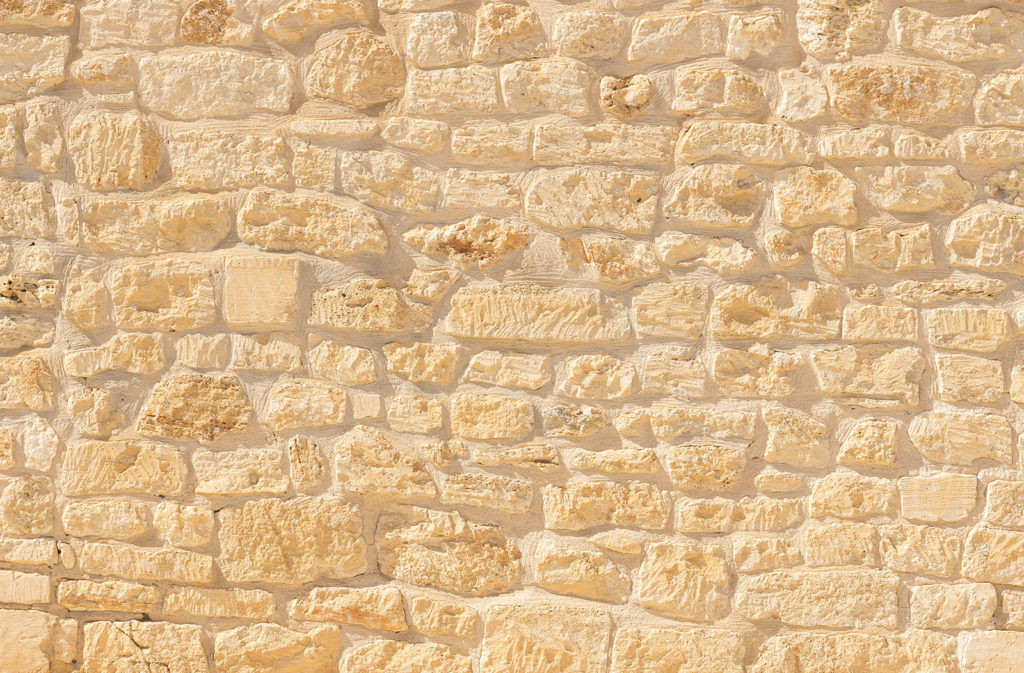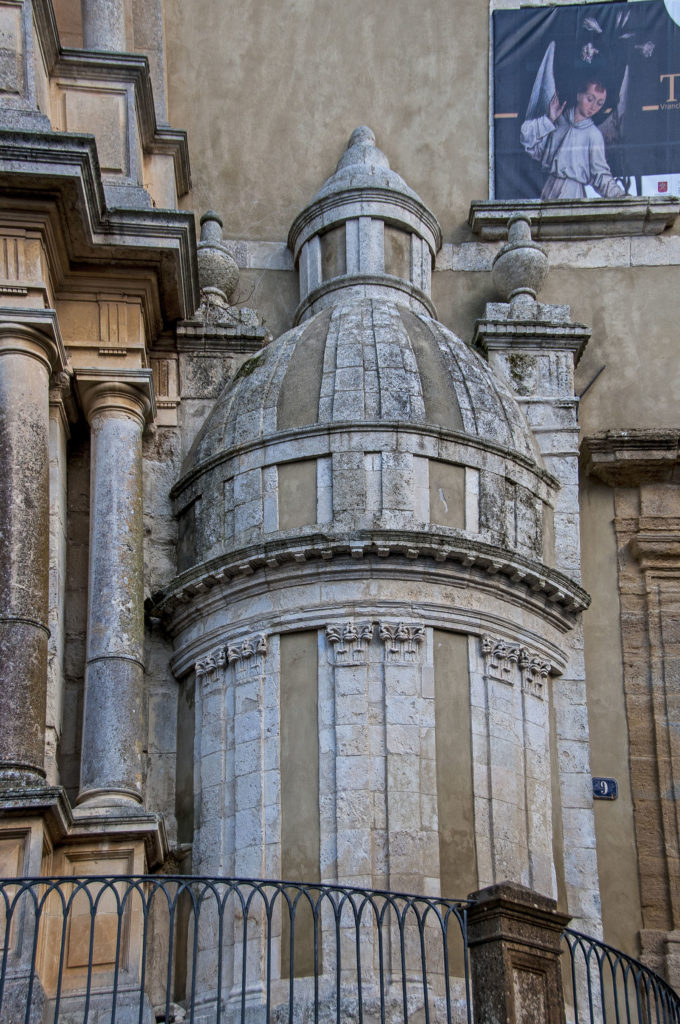Sandstone, also called pietra pece because of its shades of very dark grey, is a very ancient sedimentary rock. It dates back to the Cenozoic Era, which ranges from 65 million to around 2 million years ago.
The colour of this sedimentary rock is given by the percentage of bitumen varying from 4% to 10%, a characteristic that make it suitable for damp places and flooring.
 As you look at the façade of the Church of San Francesco d’Assisi all’Immacolata, you will notice an interesting curved element similar to an apse that creates an asymmetric effect, the Chapel of the Santissimo Sacramento Ritrovato.
As you look at the façade of the Church of San Francesco d’Assisi all’Immacolata, you will notice an interesting curved element similar to an apse that creates an asymmetric effect, the Chapel of the Santissimo Sacramento Ritrovato.
The interior of the chapel is equally scenic, enriched by stuccoes and decorated ceramic flooring.